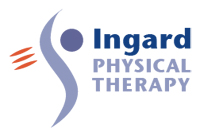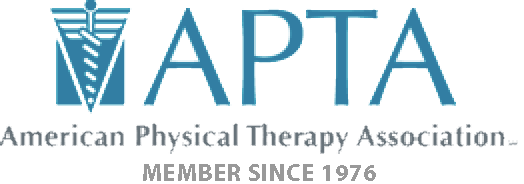About Low Level Laser, Cold laser or Photobiomodulation. What is laser?
We have used the energy of light to heal various conditions for many years. Jaundiced newborns are put under blue lights to help stimulate the liver. People with psoriasis are treated with ultraviolet light therapy.
 Laser is an anacronym for Light Amplification by Simulated Emission of Radiation. Laser is photonic light energy. It has been used as a safe and effective healing modality in Europe, Asia, Russia, Hungary, Czech Republic, South America and by veteranarians in the US for over 60 years. There are no negative side effects reported in the literature. In 2000, a study done using the Erchonia laser for neck pain and carpal tunnel syndrome led to FDA clearance for low laser for human use in the US. I purchased the Erchonia laser shortly after it received FDA clearance. Subsequently, many other laser companies have gained FDA approval for their devices.
Laser is an anacronym for Light Amplification by Simulated Emission of Radiation. Laser is photonic light energy. It has been used as a safe and effective healing modality in Europe, Asia, Russia, Hungary, Czech Republic, South America and by veteranarians in the US for over 60 years. There are no negative side effects reported in the literature. In 2000, a study done using the Erchonia laser for neck pain and carpal tunnel syndrome led to FDA clearance for low laser for human use in the US. I purchased the Erchonia laser shortly after it received FDA clearance. Subsequently, many other laser companies have gained FDA approval for their devices.
Lasers emit light of a specific wavelength. The wavelengths most often used for healing are in the red range and are visable to the naked eye around 630 nanometers. Longer wavelengths (800 nanometers) are in the infrared range and cannot be seen by the naked eye. These longer wavelengths seem better for treating pain but the shorter wavelength in the 632 range works better for effecting change on a cellular level that accellerates healing. I use both red visable light and infrared depending on the condition being treated. Low level laser that we use is completely painless.
Low powered lasers and high power lasers work very differently in the body. High power lasers, create heat which can destroy tissue as in cataract surgery. High power lasers make high precision surgical cuts, or can eradicate a skin lesion. Low power laser will accelerate healing.
Sunlight consists of light of many different wavelengths (rainbow) Laser light is monochromatic which means it is a beam of only one color or wavelenth. True lasers have a very high level of coherence. Coherence refers to photons of light being ordered, syncronised and connected with each other over long distances.
There are many inexpensive LED devices for pain on the market. LEDs use red light in the same wavelength as a laser but are not coherent. The light is scattered, not focused like a true laser. This lack of coherency of the photon beam of an LED results in a weaker biological effect on tissues. (Ref The New Laser Handbook, Tuner and Hode, 2010
Michael Hamblin, Wellman Center for Photomedicine
Massachusetts General Hospital, Boston, MA
How does low level laser work?
The low level laser does not generate any heat, vibration or sound. It works by a process called photobiomodulation. When light ( photonic energy) hits certain molecules in the cell called chromophores, electrons in the mitochondria are excited from low to higher states of energy. This “jumpstarts” a complex series of enzyme reactions in the mitochondria. Mitochondria are the cellʼs power generator. This complex reaction results in a cells ability to create energy in the form of ATP (adenosine triphosphate). An increase in nitric oxide, intracellular calcium, and reactive oxygen species also occur which are substances needed for cells to work. Photobiostimulation activates certain gene expression factors that have protective, detoxing and proliferating effects on cells. In short, photobiostimulation improves cellular metabolism. This results in a decrease in inflammation, pain relief and regeneration of damaged tissue.
What conditions can be treated with low level laser?
Muscle pain and weakness, plantar fasciitis, tendonitis, arthritis, low back and neck pain, tennis elbow (epicondylitis) swelling in a joint, frozen shoulder, TMJ dysfunction, disc herniation, peripheral nerve injuries, neuropathy, carpal tunnel syndrome, myofascial pain syndrome, fibromyalgia, thoracic outlet syndrome, bursitis, sprains and strains, scar tissue after surgery or injury, pain after radiation and wound healing, fracture healing, chronic regional pain syndrome or reflex sympathetic dystrophy.
Laser will be used more in stroke rehabilitation and traumatic brain injury as research proves itʼs efficacy. Dentists and oral surgeons commonly use low level laser.
In summary, the laser will improve any kind of tissue in the body on a cellular level.
Are there any conditions where laser is contraindicated?
Pregnancy
Because there are no studies on laser therapy and pregnancy and for medical-legal reasons, laser companies advise not to use the laser on pregnant women.
Thyroid
It is not recommended to use the laser on the thyroid because it is a light sensitive organ. There have been no studies showing harm to the thyroid with laser.
Cancer
For medical legal reasons, laser companies state in their disclaimer that the laser should not be used on a person with cancer.
How many treatments of laser are needed to see a result?
Laser treatments can result in significant pain reduction after one visit. Most people notice benefit after the third treatment in terms of pain relief, increased range of movement or strength. Treatment results vary depending on the chronicity of the condition.
What is the ideal frequency and duration of treatment?
3 times a week for 2 weeks then 2 times a week for 2 weeks. If no change after one month, laser is discontinued.
Does insurance pay for laser?
At the present time, laser is still considered an experimental modality by U.S. insurance companies (even though itʼs been used for over 50 years) Insurance companies do not cover laser at this time. I expect that will change in the near future as research proves that patients who get laser treatments as part of their therapy, heal faster. In my 13 years of experience with laser, I observe 40-50% faster healing with acute conditions. With chronic conditions, due to the fact that multiple layers of complexity may exist, the gains are slower but still very noticeable.
Research on low level laser therapy
laser.nu – website for the World Association of Laser Therapy

